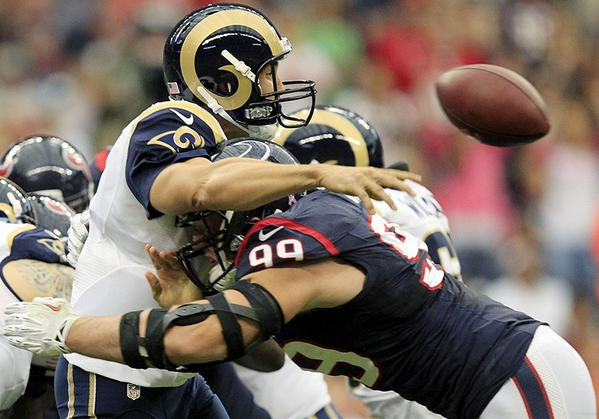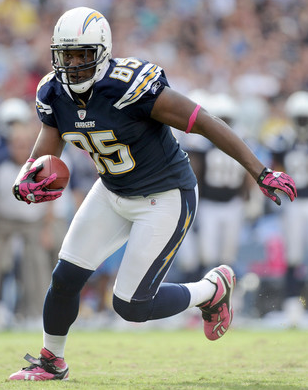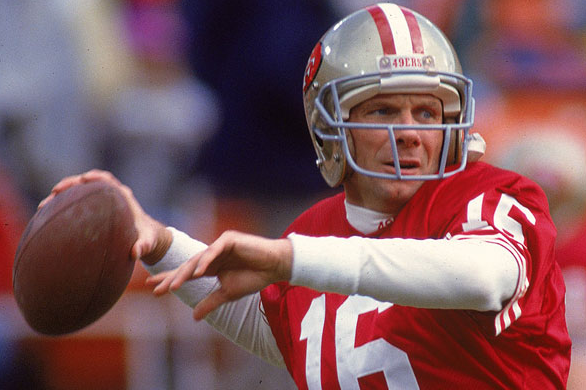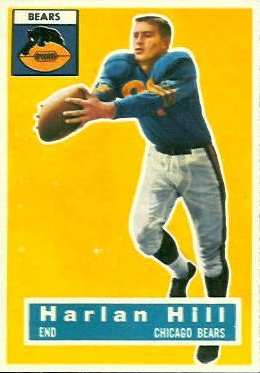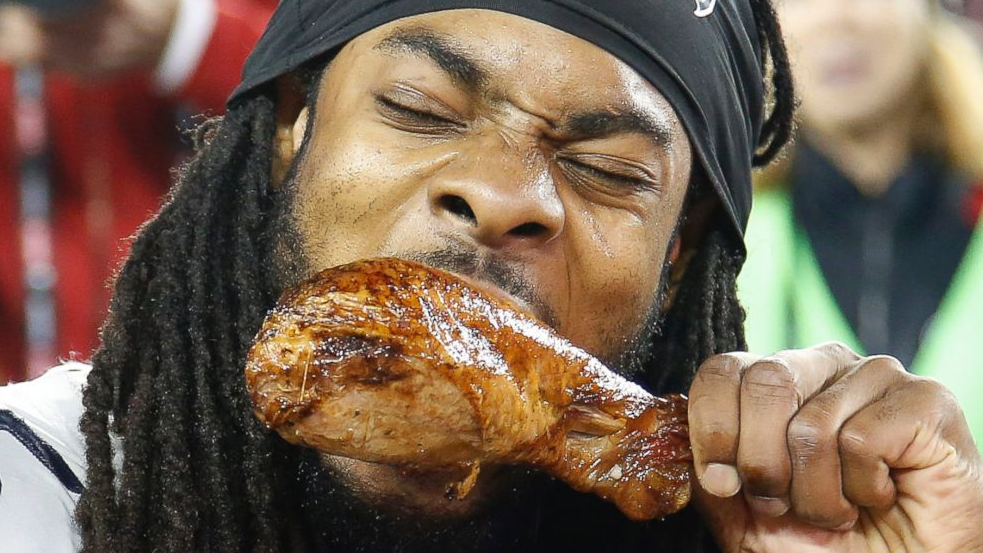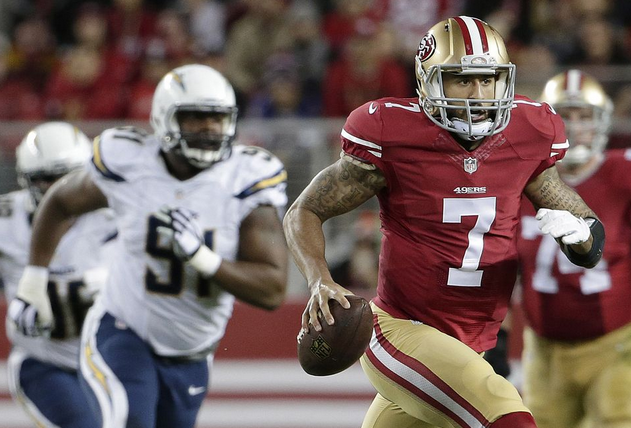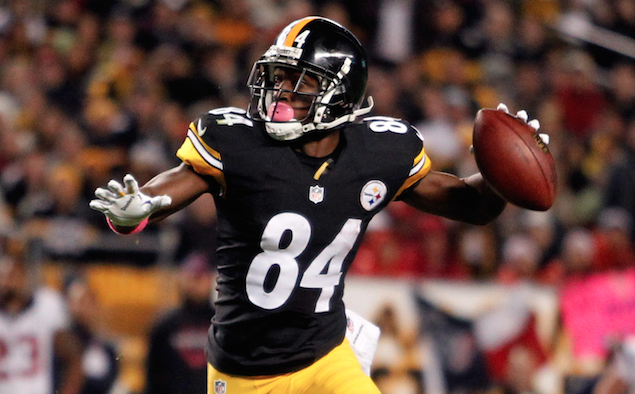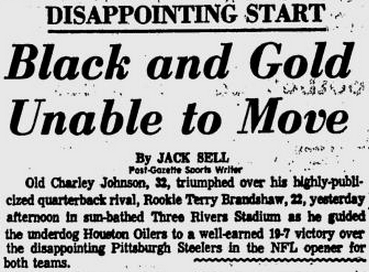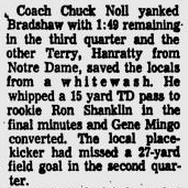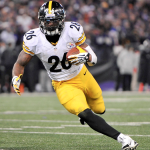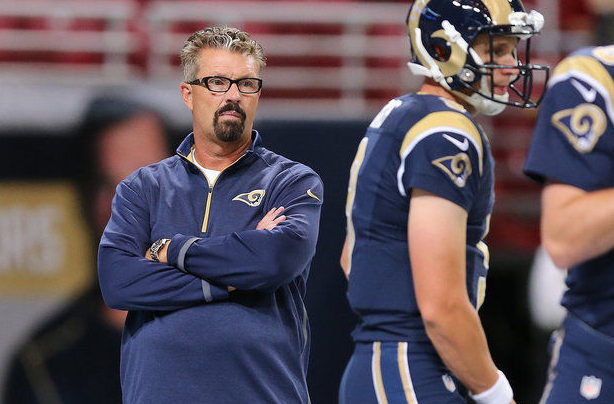The words wash by you as you wade into the story about this year’s selections: “Watt, Gronk unanimous AP all-pros.” What exactly does it mean, this Unanimous Thing? How often has it been achieved — and by whom?
Answer: For starters, it’s pretty rare, which makes sense when you stop and think about it. After all, how often can you get 50 media folk to agree on anything? In 2007, for instance, the Patriots’ Tom Brady had one of the greatest quarterbacking seasons ever: 50 touchdown passes, 8 interceptions, a 117.2 passer rating and, oh yeah, a 16-0 record. But some yo-yo still felt obliged to split his vote between Brady and the Packers’ Brett Favre, who threw about half as many TD passes (28), about twice as many picks (15) and had a 95.7 rating. (He/she must have had Favre on his/her fantasy team or something.)
By my count, 15 players have been unanimous AP all-pros in the 2000s, three of them twice (Watt, Peyton Manning and LaDainian Tomlinson). So it’s happened 18 times in 15 years — roughly once a year. As you scan down the list, you’ll realize that just about every one of these guys is either in the Hall of Fame, a lock for the Hall of Fame or beginning to move strongly in that direction.
UNANIMOUS AP ALL-PROS IN THE 2000S
● 2014 (2) — Patriots TE Rob Gronkowski, Texans DE/DT J.J. Watt. Gronkowski, now fully recovered from a blown-out knee, had a typical Gronk year: 82 catches for 1,124 yards and 12 TDs in 15 games. (Bill Belichick held him out of the last one.) Watt had an even better season: 20.5 sacks, two defensive TDs, a safety and three TD catches on offense.
● 2013 (1) — Broncos QB Peyton Manning. At 37, Manning had a career year, breaking NFL season passing records with 55 TDs and 5,477 yards as Denver went 13-3, best in the AFC.
● 2012 (2) — Vikings RB Adrian Peterson, Watt. Peterson: 2,097 rushing yards (8 off Eric Dickerson’s mark of 2,105, which has stood since 1984). Watt: 20.5 sacks, 16 passes defended (more than many starting DBs).
● 2011 — Nobody.
● 2010 (1) — Patriots QB Tom Brady. There are all kinds of numbers I could throw at you, but the best one is: Brady didn’t throw an interception in the Patriots’ last 11 games (a record streak of 319 attempts that was stretched to 335 the next season).
● 2009 (1) — Titans RB Chris Johnson. Rushed for 2,006 yards, topped 100 rushing yards in the final 11 games and set a mark – which may not be broken anytime soon – with 2,509 yards from scrimmage.
● 2008 (1) — Ravens FS Ed Reed. League-leading nine interceptions and three defensive TDs, including a 107-yard INT return, the longest in NFL history.
● 2007 (2) — Chargers RB LaDainian Tomlinson, Patriots WR Randy Moss. LT wasn’t quite as sensational as he’d been the year before, but he still rushed for an NFL-high 1,474 yards, scored 18 TDs and threw for another TD. Moss, in his first season with Brady, caught a record 23 TD passes, one more than Jerry Rice totaled in 1987 (in 12 games).
● 2006 (3) — Tomlinson, Dolphins DE Jason Taylor, Broncos CB Champ Bailey. This was LT’s ridiculous 31-TD year. Enough said. Taylor: 13.5 sacks, two interception returns for scores. Bailey: 10 INTs (nobody has had more since 1981), 21 passes defended.
● 2005 (1) — Chargers TE Antonio Gates. The first 1,000-yard season of Gates’ great career (89 catches, 1,101 yards, 10 TDs).
● 2004 (1) — Manning, Colts. Even though he blew off the last game except for a few snaps, Peyton set season passing marks with 49 TDs and a 121.1 rating (both of which have since been broken).
● 2003 — Nobody.
● 2002 (1) — Colts WR Marvin Harrison. His 143 catches (for a league-leading 1,722 yards) is still the NFL record . . . by 14.
● 2001 (2) – Rams RB Marshall Faulk, Giants DE Michael Strahan. Faulk: 1,382 rushing yards, 2,147 yards from scrimmage, 21 TDs. Strahan: A record (with the help of Favre) 22.5 sacks.
● 2000 – Nobody.
To recap, Faulk and Strahan are already in the Hall, and the rest — with the exception, probably, of Johnson — could well be headed there. (Peterson, of course, will be an interesting case, depending on where his career goes from here.)
Conclusion: Being a unanimous AP all-pro says a lot about a player, a lot more than just: he had a really, really good year. We’re talking about the best of the best here.

